Gurajada Appa Rao’s Kanyasulkam, is one of the earliest modern works in Telugu plays, and the first to deal with social issues. The play portrays the practice of Kanya-sulkam (bride price) which was a common feature among the priestly-Brahmins in Telugu-speaking areas of Kalingandhra. Even today, this play continues to be most popular. A number of expressions used by Gurajada in this play are still popular in modern-day Andhra Pradesh.
Theatre is fundamentally a medium of communication. Realizing this great virtue of theatre,, Gurajada Apparao wrote in the preface of the first version of his play in 1897, ” Such a scandalous state of things , is a disgrace to society, and literature cannot have a higher function than to show up such practices and give currency to a high standard of moral ideas. Until reading habits prevail among the masses, one must look only to stage to exert such healthy influence. These considerations prompted me to compose Kanyasulkam”. He goes on to say “ I clothed the play in the spoken dialect, not only that is better intelligible to the stage going public than the literary dialect, but also from a conviction that it is the proper comic diction for Telugu. Dramatic style is no doubt determined to some extent by stage, but the absence of any real dramatic literature in Telugu, leaves a writer free to adopt that outward form that he deems most appropriate for the presentation of his ideas.”
Though Gurajada was not a contemporary of Betrolt Brecht, like Brecht, he also wrote his play with the main intention that Art is not a mirror to held up to reality but a hammer with which to shape it. In this process Gurajada had a great vision to foresee so much of things fo come in later period about the State’s characteristics.
Although it maintains a surface of humor through satire, the play conveys the “disgrace to society” that outraged Gurajada. This way the play sought to take on the prejudices and practices of contemporary Indian society head-on.
As , the famous writer said Kodavatiganti Kutumbarao said in 1980, Kanyasulkam is a legendary Telugu play even today, because “ Most of the theatre values are distinctly available in Kanyasulkam. For instance, no extra character has been added in the play to add to the dramatic element. Each character has its distinct importance in it. In picturing the characters and the dialogues, the natural behavioral pattern available those days are portrayed. . Gurajada Apparao garu has not woven any character that does not fit in his scheme of things. To highlight the bad features of the concept of ‘Kanyasulkam’, Apparao garu has not let Subbi drown in the well. But still he could portray the heinousness of Kanyasulkam successfully” ( Social outlook in Dramas – Kodavatiganti Kuntumba rao – 1980).”
While Moliere, Ibsen and Brecht were great playwrights and directors and made an incredible mark in the World Theatre arena, Mr Chekov, though wrote 14 major plays, is more known for his stories, particularly the short stories. His stories have that satirical element that some of them were made into plays by creative directors in the India. Late Sri Attili Krishna Rao from Visakhapatnam , wrote and performed Tomy Tomy, a short play based on Chekov’s Chameleon (oosaravilli in telugu). This incidentally was first used by renowned Ravi Sastri garu in “Rattalu Rambabu”.
Gurajada’s Kanyasulkam has all most all the elements of Moliere’s Comedy. Girisam alone portrayed Comedy of manners and comedy of character. Situations between Ramappa Panthulu and Madhuravani have incidents of Romantic Comedy. Gurajada Appa Rao garu, had used the comedy of Moliere significantly.
Gurajada’s Kanyasulkam has this element of Ibsen Theatre of using a critical eye and free inquiry into the conditions of life and issues of morality. Gurajada’s critical eye enabled him immensely to evaluate the then existing social system and its evil characteristics and also to develop a vision to foresee things that could happen years ahead. One of the major similarities between their work is the importance given to the regional ambience to the play in all aspects. Like Ibsen has pledged that “My desire was to depict human beings and therefore I would not make them speak the language of Gods”, Gurjada also has committed himself to write Kanasulkam in that regions, situations, localities, places, language, characters, etc. Gurajada Apparao also seems to be motivated by Ibsen’s words, as spoken by Benrik in his play “pillars of Socirty” – “in these days : it is you women who are the pillars of Society. Gurajada said in early 20th Century that “Modern women will rewrite the history” . Both Ibsen and Gurajada have realized the importance of women and need for their social development as expressed in their writings.
Russian writer Anton Chekhov is recognized as a master of the modern short story and a leading playwright of the late 19th and early 20th centuries. From the late 1890s onward, Chekhov collaborated with one of the great theatre personolities in world, Stanislavski and the Moscow Art Theater on productions of his plays, including his masterpieces The Seagull , Uncle Vanya , The Three Sisters and The Cherry Orchard. Chekhov is considered one of the major literary figures of his time. The only thing that is common in Kanyasulkam and Chekhov is that both the writers had the common characteristic of a profound understanding of human nature and the ways in which ordinary events can carry deeper meaning.
Along with Stanislavisky, Bertolt Brecht was one of the most influential figures of 20th century theatre and the most significant practitioner since World war II. Brecht’s theories for the stage, including his well known epic theatre form and alienation techniques, made him a force to reckon with. He wrote over 50 plays. The Caucasian Chalk Circle, The Exception and Rule (Lavokkinhayu Ledu in Telugu), The Good Person of Szechwan are only three of his vast array of plays
One of the most important techniques Brecht developed to perform epic theater is the “alienation” effect. The purpose of this technique was to make the audience feel detached from the action of the play, so they do not become immersed in the fictional reality of the stage or become overly empathetic of the character. Examples of such techniques include explanatory captions or illustrations projected on a screen; actors stepping out of character to lecture, summarize, or sing songs; and stage designs that do not represent any locality but that, by exposing the lights and ropes, keep the spectators aware of being in a theatre. The audience’s degree of identification with characters and events is presumably thus controlled, and it can more clearly perceive the “real” world reflected in the drama. Brecht’s perspective was Marxian, and his intention was to appeal to his audience’s intellect in presenting moral problems and reflecting contemporary social realities on the stage.
For instances, there are situations in the 5th Scene like, the one at the liquor shop, the other where Madhuravani was playing cards with police constable and others are slightly independent from the narration of the play. Similarly, the situation in Scene 7, where the Baiaragi character has also that feature. Also, many times Madhuravani, Girisam and others talk as if they are directly talking to the audience, an element of Brecht. The important sequence like this involves Lubdhavadhanulu while introspecting his deeds, in the form of talking to himself, actually was informing the audience the mistakes he committed. (the beginning of the 4th incident in Scene 5 – “what misery fell on me….. despite having so much money, to make more money I sold my daughter to an old man .. and after her husband’s death if she is moving with other men, is it her fault…)
This comparative analysis shows that in writing Kanyasulkam, Gurajada Appa Rao depicting the dismal social situation in that region, has taken advantage of the dramatic techniques as developed by Shakspere, Moliere, Ibsen and others of his time. In doing so he had shown a great vision of foreseeing how the societal and related issues would be after many years. He had also shown the importance of theatre, a major media of communication, to go to people for making them aware of the follies in society..
Kanyasulkam demonstrates the power of theatre like what Brecht much later said” We need a type of theatre which not only releases the feelings, insights and impulses possible within the particular historical field of human relations in which the action takes place, but employs and encourages those thoughts and feelings which help transform the field itself. “
*

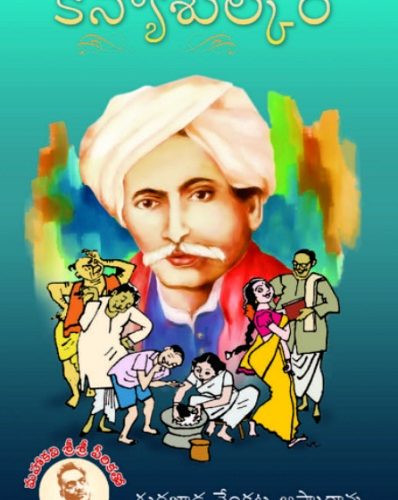


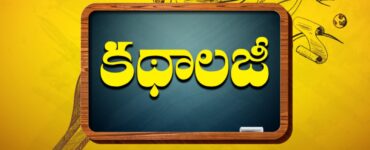

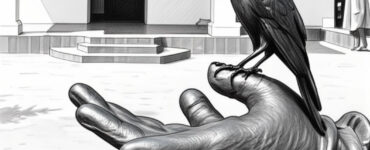
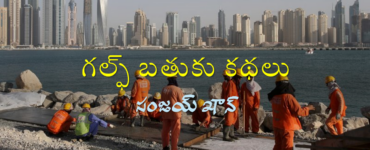
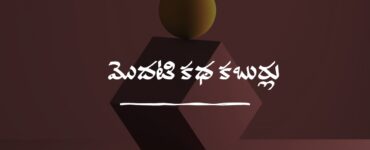
The veteran theatre personality Subrahmanyamgaru’s article on ‘Kanyasulkam’ is
Very analytical and showed in what way it is a path-breaking play and how it continued to be popular even now. He rightly pointed out that Gurazada had chosen this medium of Theatre to depict the prejudices, maladies and evil practices of the society by writing it in spoken dialect of his time, which the ordinary masses could easily understand. The expressions and phrases used by Gurazada are popular even now which shows how the play seeped into the psyche of the Telugu people.
Subrahmanyamgaru thoughtfully compared ‘Kanyasulkam’ with the works of great playwrites and directors like Moliere, Ibsen and Brecht, who made an incredible mark in the World Theatre arena. He also rightly presented the similarity between Gurazada and the Russian Anton Chekhov, a master of short story and leading playwrite of the late 19th And 20th centuries. According to him both had a ‘profound understanding of human nature and the ways in which ordinary events can carry deeper meaning.’
The article is an asset to us as it is written by a Theatre personality who has a deeper understanding and experience in Telugu Theatre. Hope he will be writing more about it in future.
Thank Very much Shantisri